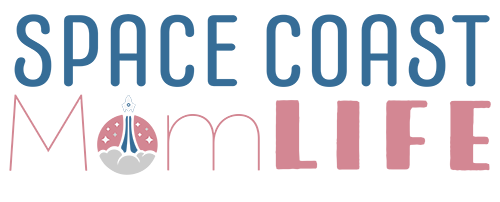Pregnancy is often painted as a time of joy and anticipation, but for many women, it comes with unexpected challenges that can turn excitement into anxiety. Meet first-time mom Alyssa Bass. She hoped for a smooth and uncomplicated pregnancy, but her journey took a different path—one filled with worry, unexpected health concerns, and, ultimately, a life-threatening postpartum condition she never saw coming. Together with the Preeclampsia Foundation, Alyssa is sharing her story to bring awareness to all moms.
Join Alyssa and other local moms as they create awareness about preeclampsia at the 2025 Space Coast Promise Walk in Cocoa Village on Saturday May 3rd!

When I first found out I was pregnant, I hoped for an easy, blissful pregnancy. However, mother nature had different plans and my pregnancy was filled with a lot of worry, anxiety, and a few bumps in the road. As a licensed mental health counselor, I am used to supporting others through adversity. However, I didn’t expect the impact of friends and family sharing their traumatic birth stories with me. While I appreciated that they felt safe to share their stories with me, each story became another line on my list of things that could go wrong.
As I moved further into my pregnancy, the social media algorithm seemed to know the most catastrophic scenarios to share with me, and all of a sudden I was prepping my husband to watch out for a barrage of potential catastrophic outcomes during labor, delivery, and then immediately after birth. I spent hours listening to podcasts, taking online birthing classes, reading about safe sleep, as well as preparing friends and family to look out for warning signs of postpartum depression and other perinatal mental health concerns. I developed arrythmia during pregnancy and purchased a blood pressure cuff so I could monitor my blood pressure. While I was informed about preeclampsia during pregnancy, and even immediately after birth. But I wasn’t informed or prepared for what was about to come.
Due to an increasing volume of amniotic fluid, I was scheduled for an induction that failed and resulted in emergent cesarean. Despite the stressful circumstances and a somewhat traumatic birth, both baby and I were healthy and recovering. Whenever my nurses would check my vitals, I would glance at the monitor for reassurance. My blood pressure was normal, and I felt relieved. I made it, I thought. All of the possible complications that I read about or heard about were now in the rearview mirror. While I was still in a lot of pain and had some swelling, my blood work and vitals were all normal and I was sent home. As a first-time mom, I was completely focused on everything they told me in discharge planning for my son. Neither my husband nor I remember anything being said about continuing to look out for signs of preeclampsia.
I had a challenging time in the first few weeks postpartum. I was in a lot of pain, struggling to breastfeed, experiencing a lot of swelling, and I was feeling more fatigued than I realized could be possible. I thought to myself, but who isn’t tired with a newborn? On the 6th day after birth, 3 days after being released from the hospital, I fell asleep on the recliner as my husband cared for our son. He had trouble waking me up to pump or breastfeed. I was just so tired, I thought, just let me sleep a little bit longer. A few minutes later I was still hard to wake, and my husband noticed that I was shivering. I had a headache, some dizziness, and just felt really groggy, but I thought all of these feelings were typical from having a hard time recovering from my c-section. My husband strongly encouraged me to check my blood pressure just to be safe despite my dismissal of it, and I’m glad he did. Since I had purchased the blood pressure cuff during pregnancy, I was immediately able to check my blood pressure and see that my blood pressure was higher than it had even been in my lifetime. My heart started racing because I knew something was wrong. I called my OBGYN’s office who urged me to go to the ER, more specifically go to the closest ER, not even to risk an extra 20 minutes to drive the hospital where I delivered.
The hospital was concerned about preeclampsia and wanted to rule out HELLP syndrome with some additional testing. As a professional Googler, I became more and more worried. I was moved to a room and treated with IV magnesium sulfate and a beta blocker and monitored over the course of several hours. I was lucky to catch things early and did not have HELLP syndrome. Over the course of 6 hours, and in what felt like forever, my blood pressure was decreasing and I was able to be discharged with additional medications and monitoring. Over the next two weeks, my blood pressure returned to normal.
I had several symptoms of postpartum preeclampsia including headache, dizziness, swelling, and high blood pressure. As a first-time mom, I initially thought that my symptoms were typical in recovery. What I did not know, is that postpartum preeclampsia can occur up to 6 weeks after birth, but most commonly in the first 7 days. I was informed about preeclampsia during pregnancy and immediately after delivery, but I did not have the awareness of the importance in continuing to monitor blood pressure and other symptoms for up to 6 weeks after birth. I’m thankful that I had the blood pressure cuff on hand, and for my husband’s persistence (maybe just this once). I share my story to spread awareness of the later progression of preeclampsia and the importance of continuing to monitor to help others. It is so easy to get wrapped up in caring for our babies during postpartum, and its just as important to care for ourselves and our health along the way.
Since 2000, the Preeclampsia Foundation has been the leading US-based not-for-profit organization dedicated solely to improving the outcomes of hypertensive disorders of pregnancy like preeclampsia, HELLP syndrome, and eclampsia by educating, supporting and engaging the affected community, improving healthcare practices, and finding a cure.
The Preeclampsia Foundation is an empowered community of patients and experts, with a diverse array of resources and support to help you have the best possible pregnancy – and to help you navigate the questions you have when you don’t have the best pregnancy outcomes. They provide unparalleled support and advocacy for the people whose lives have been or will be affected by the condition – mothers, babies, fathers and their families.









